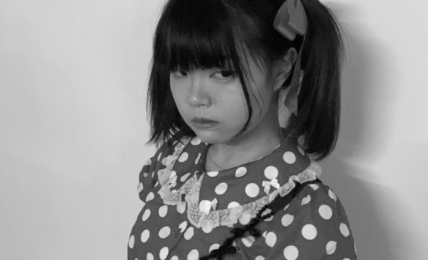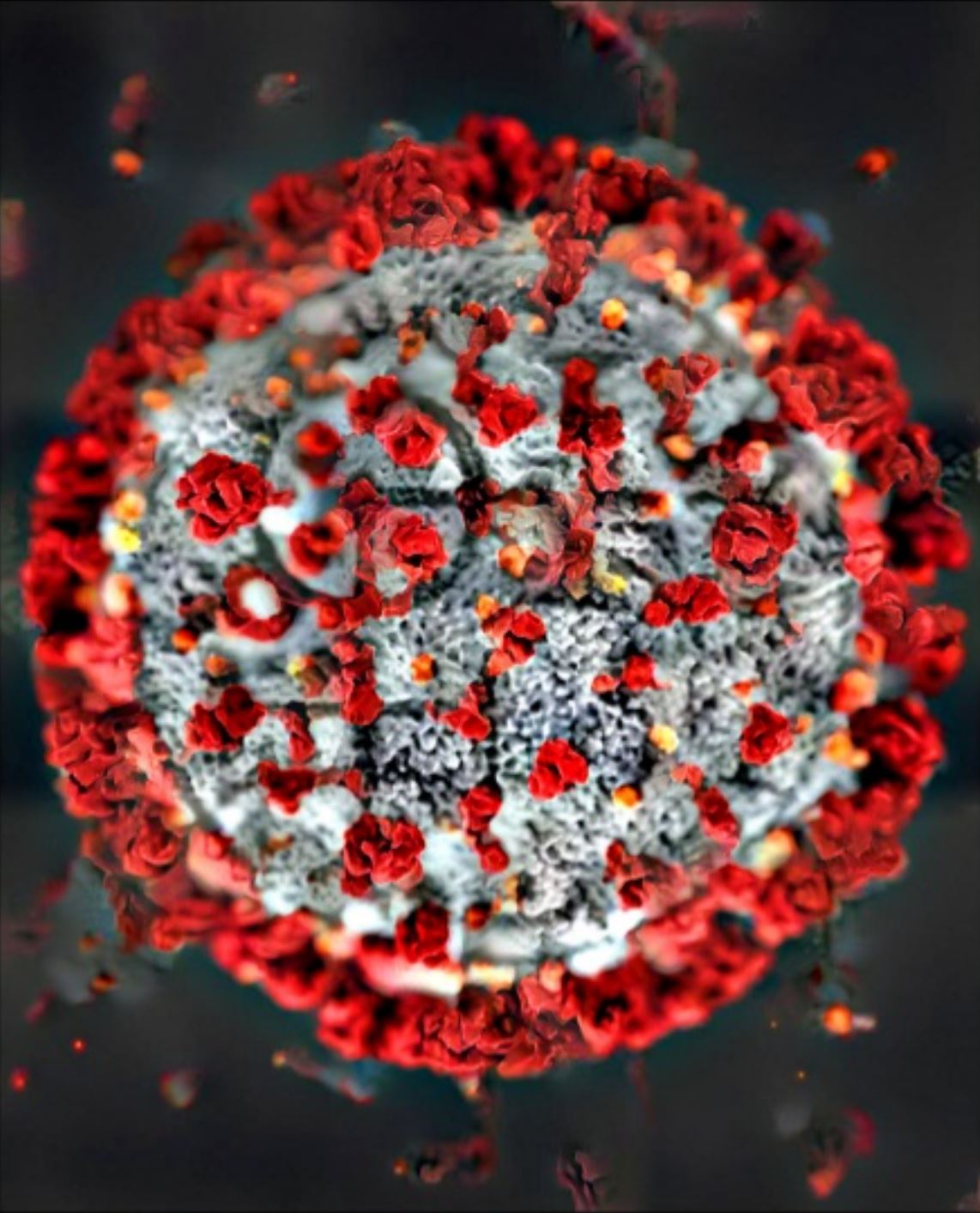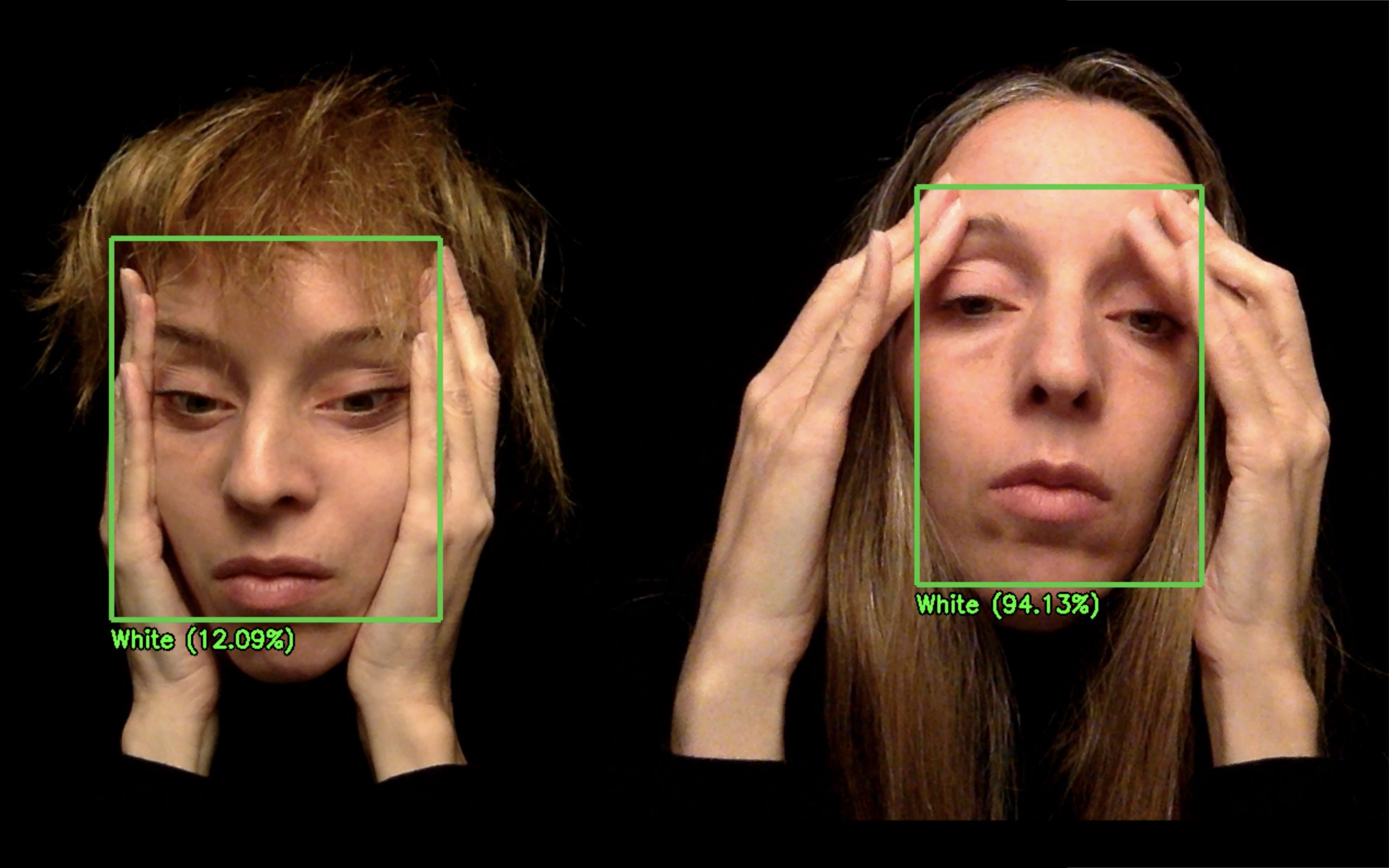Gregory Eddi Jones’ Flowers for Donald is a series of digital collages created in response to the election of Donald Trump. Jones uses flowers as “anchor points of protest, memorial, and self-reflexive connotations of enduring beauty,” which play with the heightened emotional dialogue that surrounds the current news cycle. Each collage is created around a stock image flower, and then barraged with found digital material sourced from social media, photographs of Trump supporters, stock photographs, and news from the election.
We talked to Jones about his process, aesthetic, and his future projects following the election. You can view Flowers for Donald [here] and Jones’ other projects [here].
:::
DigA: The title of your series, Flowers for Donald, seems to reference Daniel Keyes’ 1966 novel “Flowers for Algernon”, which explores society’s obsession with intelligence and manipulation over those who are “lesser” intelligent. Do discussions around Donald Trump’s intelligence influence your work?
GEJ: You’re right to point out that reference to Flowers for Algernon, which was a big inspiration for the work early on but has faded as the project evolved over the year. When I began producing these images I wasn’t thinking about any issues of intelligence, but more the underlying narrative arch of the novel which saw the protagonist, Charlie Gordon, move from a place of social marginalization, into a swift achievement of empowerment, and followed by a gradual decline to his original state.
I was thinking about that arch in relation to what I felt the journey of marginalized Donald Trump voters would undergo through the process of the election: the empowerment, and into an eventual decline upon the realization, in my belief, that promises made would not be delivered, and that empowerment would not last. I’m not so sure I believe that anymore though.
The premise became less meaningful for me as the work developed, but it is one entry point into the pictures that will remain open. I guess it’s a little funny that I kept the title. Now I imagine them all as flowers that Donald Trump might like as tokens of opulency, spectacle, and spaces of suspended reason.
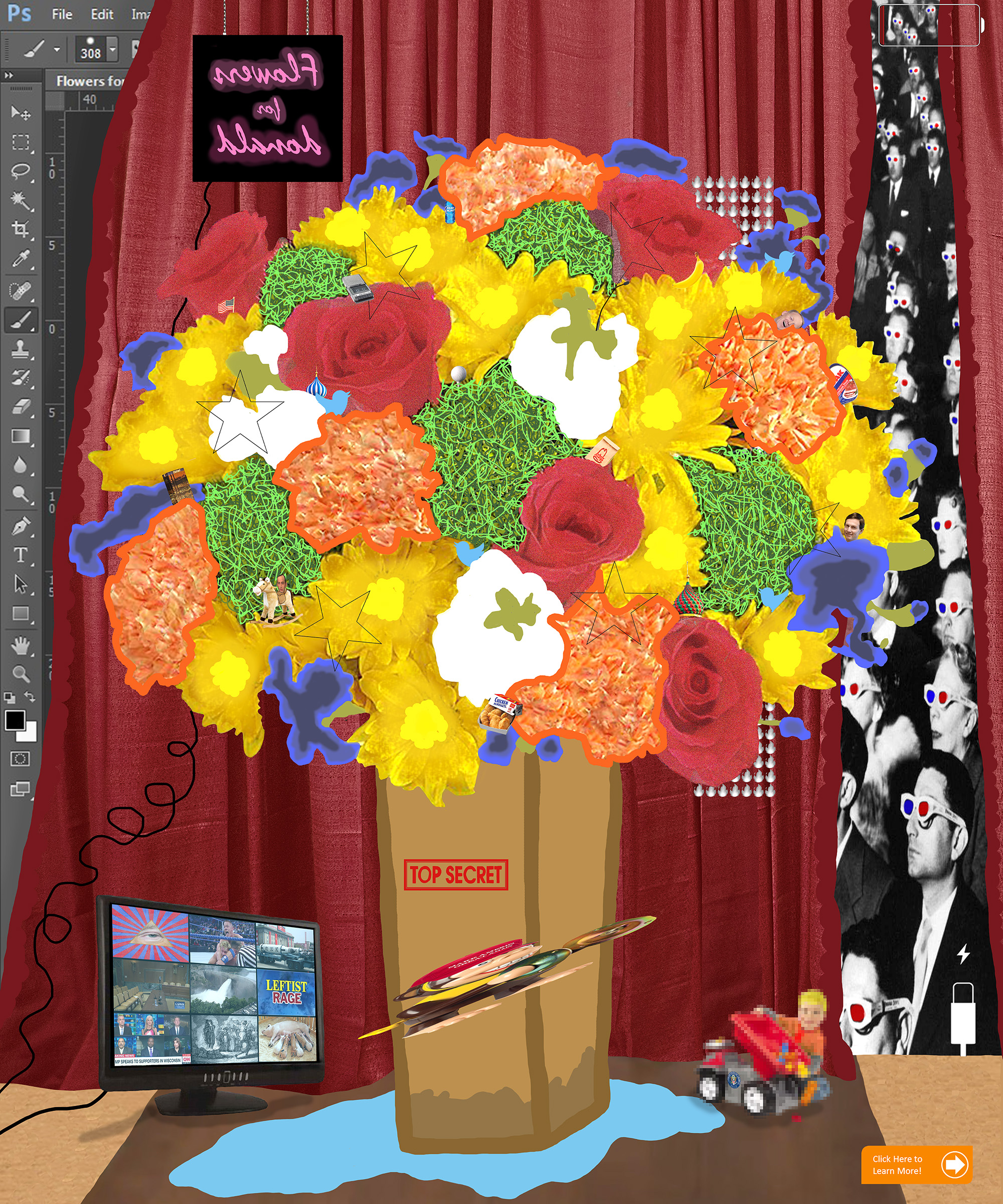
GEJ: Each image does begin with a stock photograph of flowers. I think using photography as a starting point, using the inherent truth values embedded in a photograph (even one so idealist as a stock picture), is a symbolic platform to perform artifice upon. Given the destabilization of truth values that defines the Trump presidency, I wanted the process of art-making itself to reflect a journey from truth to blatant fiction. And I think the scary thing is that once a viewer becomes accustomed to the logic of these visual grammars, it becomes normalized, and the absurdity of the pictures are taken as a given. At least this has occurred for me, and it’s a bit frightening how quickly I’ve found myself accepting the pictures on that level. It might be a testament to the flexibility of the mind to accept what is before it.
I do not know if there is any kind of picture that the eye can flat out reject, and that might be the case of words and deeds as well. Maybe there is no such thing as pure disbelief in anything, and that there is always a pathway into acceptance of absolute irrationality. I wanted to make pictures that were wrong, but they have failed in that respect because they have become acceptable entities in their own right. And so on a fundamental level I see the work as a failure.
The process of making these was more or less improvisational. All my images were sourced from the web, and the construction of pictures took place as I would listen to the news and stay up-to-date on every little thing that involved the national narrative. The ease of image accessibility on the web allowed me to work in a stream-of-conscious sort of way. With each picture I would just sort of dive in without a plan, making digital marks and manipulations, copy/pasting images, and trying to allow my subconscious to process the news and spit it back out via digital tools and appropriated images to create systems of visual metaphor.
DigA: The aesthetic of your pieces, particularly “Flowers for Donald #18 (a nice day [with some fruit])” possess a duality between the whimsicality in your marks and the seriousness of its content (you really have to zoom in to understand how serious and/or whimsical we mean). Can you speak more about how you balance the banal and provocative in this work?
GEJ: I think I probably have a penchant for dark humor, and it sometimes manifests in the work I make. The balance for me is trying to counteract the pure mortification and heaviness of life with the humor and lightness that allows a space for happiness. I think in that duality is a tension that defines the lives we all live. We’re all in a constant state of re-calibration between those two ends, and I suppose I try to make work that can activate the senses along that entire spectrum. Perhaps it coalesces in a space of bittersweetness. For me, they were fun pictures to make, but I wish the circumstances that inspired the pictures never happened. I would prefer to never have made them.
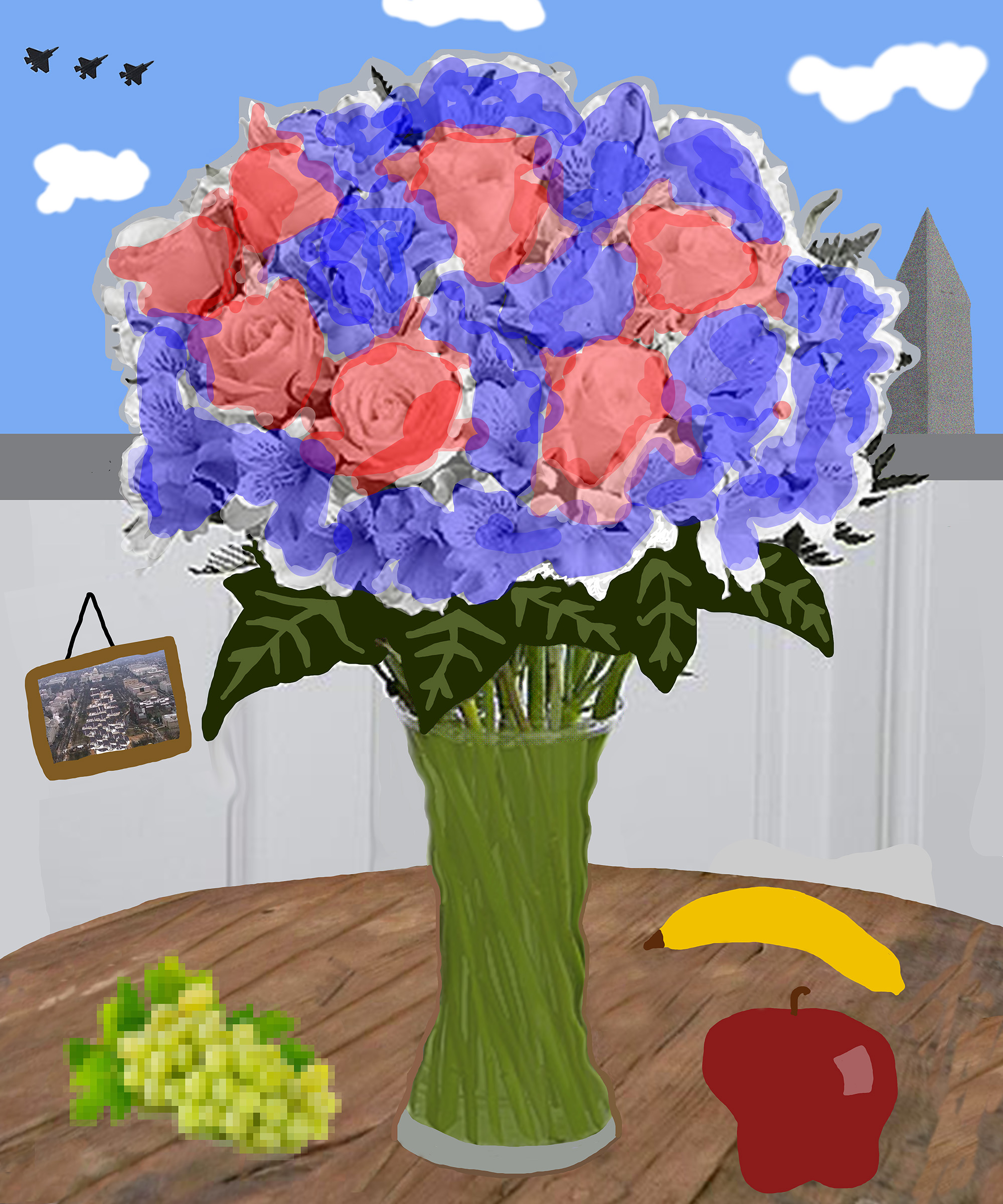
GEJ: For me it wasn’t so much the traditions of still lives than it was those of floral motifs themselves. The oeuvres of all the artists I admire have visited the floral motif in some form or another. As an artist I think it’s a really wonderful tradition to participate in, maybe something like how all basketball players try to get good at spinning the ball on their index finger…it’s almost something you just do as an artist. Flowers are an artistic common area that are free for all to occupy, and most do at some point in their lives.
So my thought was that flowers, as a symbol of enduring beauty within the history of art, were a good symbol to use to question the role of art, and my role as an artist, in responding to the election and all that has occurred since. The pictures are also trying to reflect the times we are living in.
These are two truisms of the role of art, to perform beauty and to reflect society, and this work finds a complete incompatibility between the two. I think the aesthetics that these pictures are defined by comes from the absence of a clear resolution about the role of art, and its ultimate futility, in the face of real, threatening, and dangerous political circumstances. I’m not sure I’ve done any tangible good by making these pictures, and I don’t know if that’s really even possible.
DigA: Do any of these still lifes depict specific events that are meaningful to you or prompt vivid memories of the news proceeding Trumps election? In short, do you have a favorite? (We do, it’s No. 18…and No. 23).
GEJ: Only the last one, number 23, acts as a direct response to an event, which was the Charlottesville White Supremacy march. All the others are more generalizations, but I think #21 best represents the crux of the project for me. It’s about the obscenity and spectacle of it all.
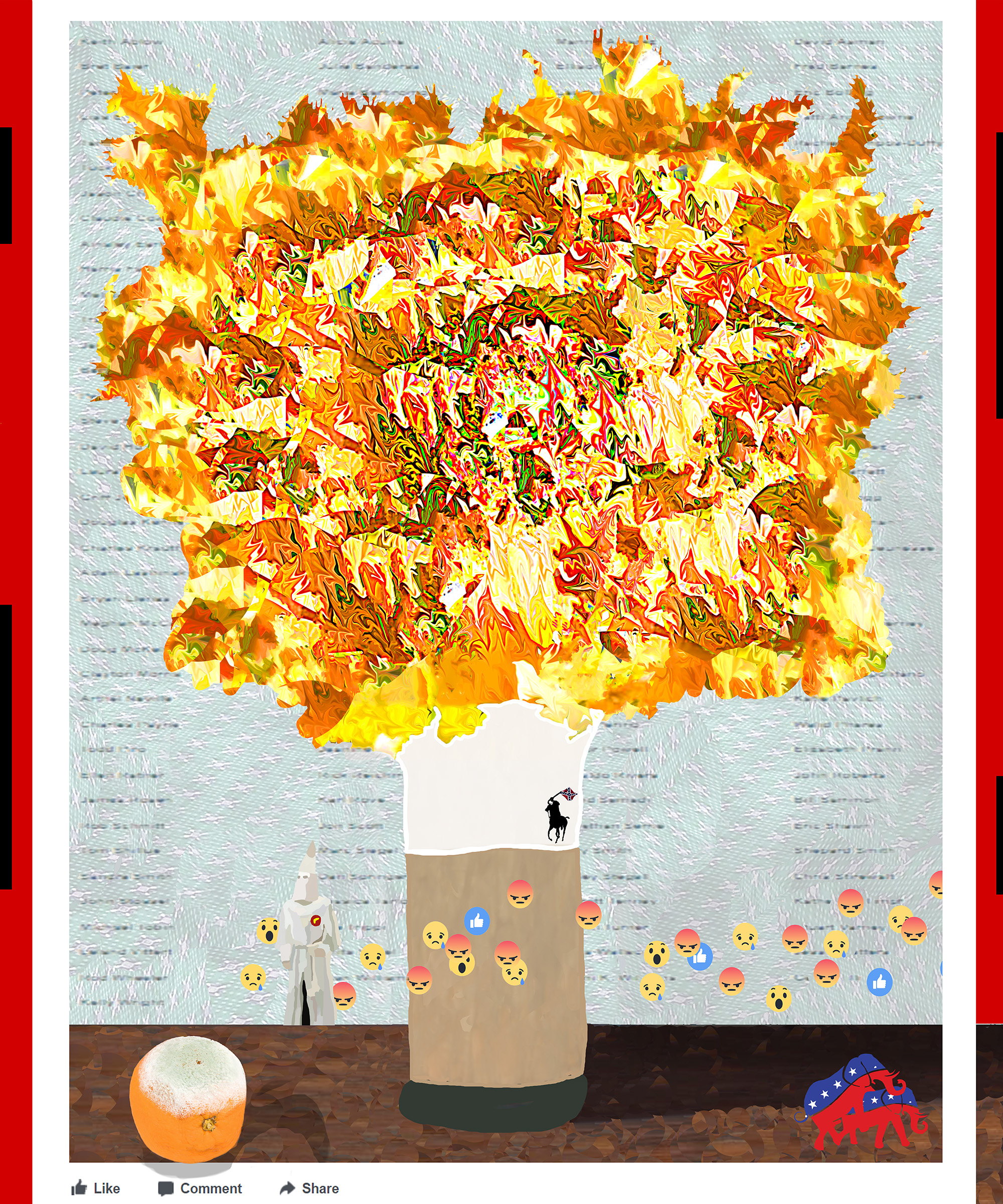
DigA: Are you still creating Flowers for Donald? If the project has ended, what brought you to its conclusion? If it’s still going, when do you see it ending?
GEJ: I’m done making them. To be honest, being so synced in to this presidency had become emotionally exhausting and I needed a break. It’s now been just over a year since I began the work, and I felt that was enough.
I’ve taken a break from art making over the past two months to disconnect from it all. Now when I look at these pictures I almost feel like someone else made them, and I think that’s what I prefer. I’m ready to move on.
I am actually about to publish a small edition book of the work, and once that is done I will consider that the end of it.

